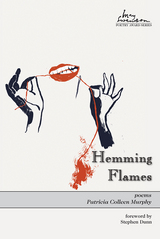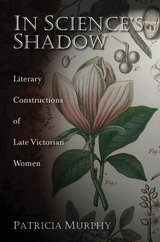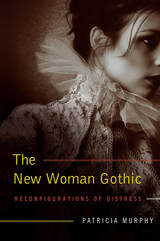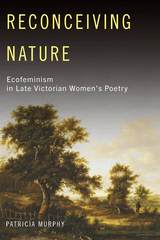
Volume 19 of the May Swenson Poetry Award Series, 2016
Throughout this haunting first collection, Patricia Colleen Murphy shows how familial mental illness, addiction, and grief can render even the most courageous person helpless. With depth of feeling, clarity of voice, and artful conflation of surrealist image and experience, she delivers vivid descriptions of soul-shaking events with objective narration, creating psychological portraits contained in sharp, bright language and image. With Plathian relentlessness, Hemming Flames explores the deepest reaches of family dysfunction through highly imaginative language and lines that carry even more emotional weight because they surprise and delight. In landscapes as varied as an Ohio back road, a Russian mental institution, a Korean national landmark, and the summit of Kilimanjaro, each poem sews a new stitch on the dark tapestry of a disturbed suburban family’s world.
The May Swenson Poetry Award is an annual competition named for May Swenson, one of America’s most provocative and vital writers. During her long career, Swenson was loved and praised by writers from virtually every school of American poetry. She left a legacy of fifty years of writing when she died in 1989. She is buried in her hometown of Logan, Utah.

The Victorian era was characterized by great scientific curiosity—as exemplified by the publication of Darwin’s Descent of Man—as well as by new questions regarding the place of women in society. Patricia Murphy now explores the tenuous interplay of gender and science to show how the era’s literature both challenged and reinforced a constrictive role for Victorian women. Focusing on a specific body of literature involving women intensely associated with scientific pursuits, and examining selected noncanonical writings—both fictional and nonfictional representations of scientific women—Murphy demonstrates how these works informed the “Woman Question” by reinforcing or rejecting presumed truths about gender and science.

Drawing from and reworking Gothic conventions, the New Woman version is marshaled during a tumultuous cultural moment of gender anxiety either to defend or revile the complex character. The controversial and compelling figure of the New Woman in fin de siècle British fiction has garnered extensive scholarly attention, but rarely has she been investigated through the lens of the Gothic.
Part I, “The Blurred Boundary,” examines an obfuscated distinction between the New Woman and the prostitute, presented in a stunning breadth and array of writings. Part II, “Reconfigured Conventions,” probes four key aspects of the Gothic, each of which is reshaped to reflect the exigencies of the fin de siècle. In Part III, “Villainous Characters,” the bad father of Romantic fiction is bifurcated into the husband and the mother, both of whom cause great suffering to the protagonist.

READERS
Browse our collection.
PUBLISHERS
See BiblioVault's publisher services.
STUDENT SERVICES
Files for college accessibility offices.
UChicago Accessibility Resources
home | accessibility | search | about | contact us
BiblioVault ® 2001 - 2024
The University of Chicago Press









